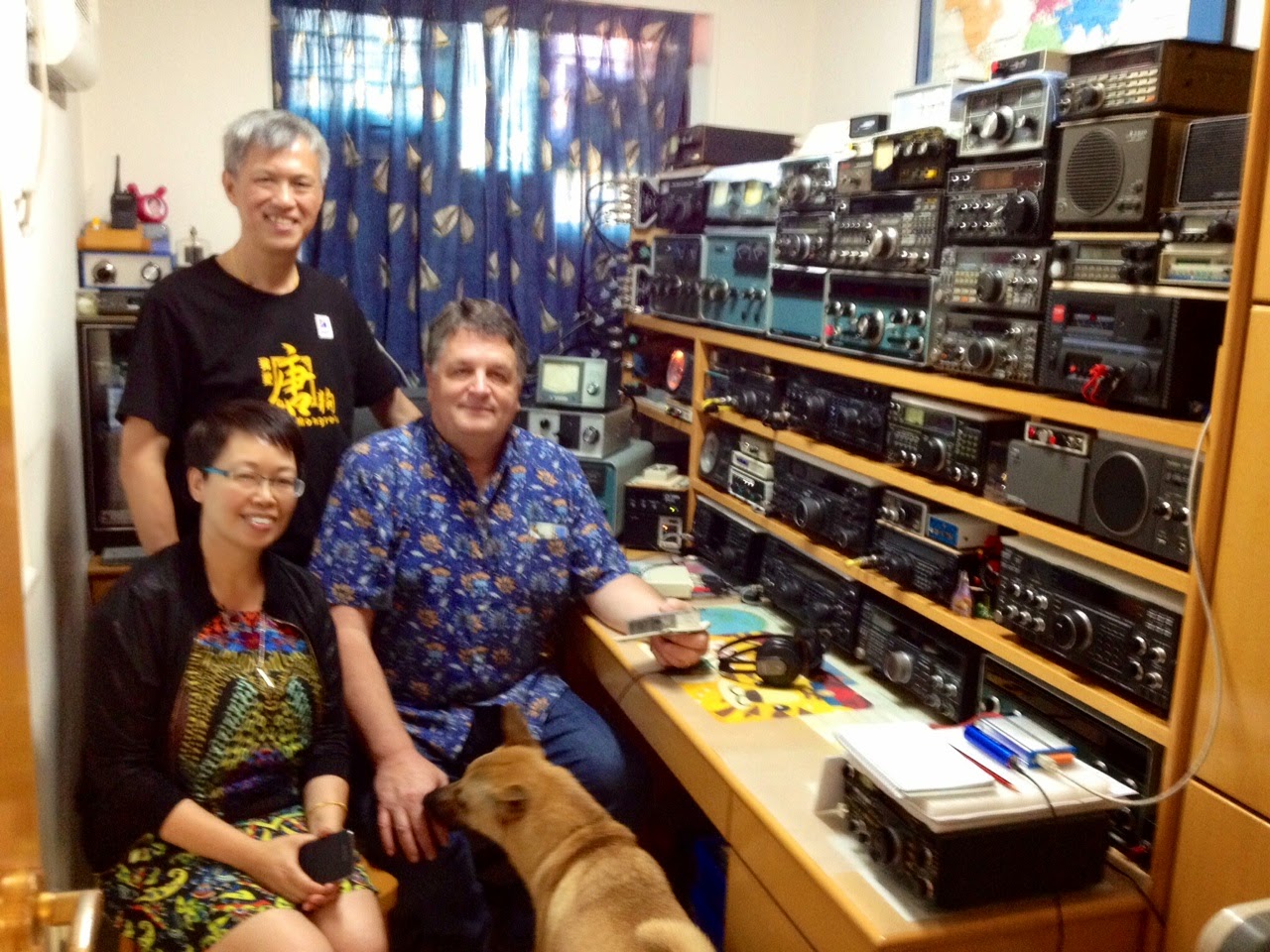When we came to Hong Kong, Jeff had to apply for permission to operate his low power, high frequency (HF) transceiver here. His FCC license made him eligible for a reciprocal license so he wouldn't need to sit for another set of exams. There are more than 3,000 licensed hams in Hong Kong. In the early days, Hong Kong had two classes of amateur radio licenses: Full and Restricted. The Restricted class did not require passing the 12 word per minute Morse Code test and only allowed operation on the VHF/UHF bands. In 2004, Hong Kong revised its amateur radio regulations, eliminating the Morse Code requirement and establishing one single class of license. However, because of space constraints in Hong Kong, most hams are unable to put an antenna up on their roofs, meaning very few of them are active on HF bands, and the majority transmit on VHF/UHF bands.
Hong Kong regulations are unique in that they require both an amateur station license and a separate authority to operate. However, in order to apply for these, Jeff needed his Hong Kong ID card. In order to get that, my work permit had to be approved, and that didn't happen until March. So Jeff was off the airwaves for a couple of months, and he underwent some withdrawal symptoms. Fortunately, we received our Hong Kong ID cards in early April, and Jeff immediately went to the Hong Kong OFCA and applied for his license, which was promptly granted. Now he is fully licensed to operate here.
 |
| Fanling is about 25 miles north of Central Hong Kong |
 | |
| Pansy & Charlie Ho in their "ham shack" with Jeff and P.J. the dog |
Jeff disappeared into Charlie's "ham shack" where the two of them tried out his setup, while I chatted with Pansy and got to know their dogs. It was really nice to get some quality "dog time" after being dog-less for the three months we've been in Hong Kong.
 |
| Charlie and Jeff on the roof inspecting antennae |
The Ho's took us on a tour around Fanling to see some of the sites. The Fanling-Sheung Shui area has grown quickly during the years that the Ho's have lived there, and its population is now around 300,000. We visited an area known as Lung Yeuk Tau, which is comprised of five historic walled villages of the Tang Clan. The Tang Clan originated in Jiangxi province in what is now mainland China, but are considered to be native Hong Kong people, having been the first to settle in what is now Hong Kong from China in the 11th century.
 |
| Entrance to the Tung Kok Wai walled village |
We visited the entrance towers of the To Wai and Tung Kok Wai walled villages. Although hundreds of years old, people still live inside these villages.
We also visited the Tang Chung Ling Ancestral Hall. An ancestral hall is a Chinese temple dedicated to deified ancestors of surname lineages of Chinese families. Historically, ancestral halls were used for rituals or festivals in honor of a family's ancestors, including weddings and funerals. In more recent times, the halls have also been used for community functions such as meetings and elections. The Tang Chung Ling Ancestral Hall is the main ancestral hall of the Tang Clan and is one of the largest in Hong Kong. It was built in the 16th century and consists of three buildings.
 | ||
| Pansy, Jeff and Charlie in front of Tang Chung Ling Ancestral Hall |
 |
| Jeff and Charlie sharing lobster, chicken and spicy beef at dinner |














